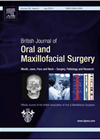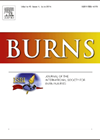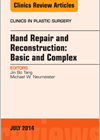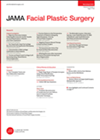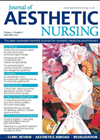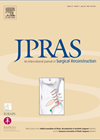
Journal Reviews
Orthognathic surgery for OSAS
Orthognathic surgery is developing as a viable and long-lasting treatment option for obstructive sleep apnoea syndrome (OSAS). There have been a growing number of publications that report the benefit of using conventional orthognathic techniques for OSAS. In the present retrospective...
Application of substance P as an osteogenitor in mandibular distraction osteogenesis
In this well organised study the authors demonstrate the benefit of use of substance P to improve the quality of bone during mandibular distraction. Substance P is a neuropeptide that is distributed in those sensory nerve fibres that innervate the...
Review of free flap use in burns
The authors looked at 346 studies of the use of free flaps in burns and undertook a systematic review of 30 of these studies after applying inclusion and exclusion criteria. They found that the use of free flaps could be...
Age-specific models for predicting burns mortality
The authors of this paper attempt to add to the numerous burn mortality prediction models which have been described in many papers from many countries, by analysing data from the American Burn Association National Burn Repository. As such they have...
A place for nerve transfers in your hand surgery service
The author summarises the application of nerve transfers in upper limb trauma. This is a review article and covers the principles of transfer; the indications, preoperative assessment and the whole patient journey, stressing the need for rehabilitation. The technical factors...
Fingers and toes and how to do it!
The authors provide an excellent historical and current overview of the options for reconstruction of injuries of the thumb and finger tips. This takes you through the reconstructive ladder in its entirety, but also discusses philosophically the different approaches we...
A retrospective comparison between standard septoplasty and extracorporeal septoplasty
This paper shows the results of a retrospective study made on 169 patients with nasal obstruction due to a deviated nasal septum who were operated using a standard septoplasty technique or performing an extracorporeal septoplasty. Postoperative nasal patency, aesthetic outcome,...
Labbé in children
This is the first report in the literature of orthodromic temporalis tendon transfer or the Labbé technique performed on children. The authors used a modification of the transoral approach to the temporalis tendon, originally described by Byrne and Boahene, which...
Dermatology guidelines for aesthetic nurses managing common skin conditions
Aesthetic nurses are frequently involved in the assessment, diagnosis and treatment of many common dermatological conditions affecting the face and body and should possess knowledge of the current recommended clinical guidelines. The author provides an informative overview of the current...
The life cycles and biological end pathways of dermal fillers
This is an extremely comprehensive and well-designed study of short-term and long-term degradable fillers as well as permanent fillers. Having identified and reviewed 109 relevant manuscripts between 2001 and 2013, Ahn and Rao have produced an excellent paper on this...
Harvesting the flexor hallucis longus what is the increased morbidity
The free fibula flap and its variations are now widely used in various clinical applications for microvascular reconstructions. Occasionally and to add bulk the flexor hallucis longus (FHL) muscle is harvested along with the fibula. Additionally, the postoperative morbidity is...
Lipofilling for scar improvement
Since Coleman et al. in 1991 reported on lipofilling, numerous applications have been reported; these include but are not limited to contour restoration, lip augmentation and wrinkle therapy. There have also been some one-off reports of improvements in scars following...

